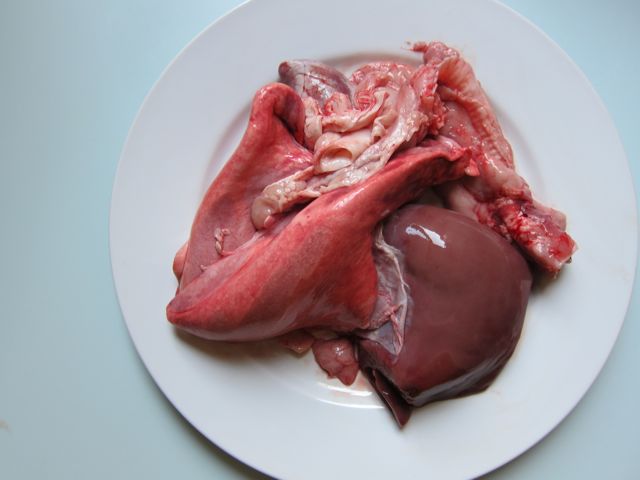
I know people like Easter in Italy for a lot of reasons. Some like the big chocolate eggs, others the cheese-filled pizza di pasqua. Then there is the whole colombe thing (the Easter version of pannetone). And I guess some people actually do go to Mass since Easter is a religious holiday and not just an excuse for a big meal.
But me? This is the time of year when I order my abbacchio, or baby lamb, to roast in our wood-fueled oven up in Todi. While I usually get a rosemary garlic thing going, this year I may actually experiment with some of Mark Bittman’s suggestions. Maybe.
But that’s not why I’m excited. What I love about Easter is not the lame gift that usually comes inside the big hollow Easter Eggs. I like the gift that comes inside the little lamby: coratella.
Coratella is the Italian word for lamb’s pluck. Not that you’ve ever heard of that word before, I’m sure. Lamb’s pluck is the lungs, liver, and heart of a lamb. All still connected by the esophagus. It’s not an easy cut of meat to find, and is somewhat seasonal since it’s best when it comes from freshly slaughtered young spring lambs: abbacchio.
I picked up my lamb last Sunday, since I won’t be in town for next week’s farmer’s market. (I get my lamb from Nicolai Felice, who is at the Roma Farmer’s Market as well as the one at Circo Massimo) While I was ok with letting my lamb spend some time in the freezer before next Sunday’s lunch, I knew the coratella was going to get eaten up while it was still fresher than fresh.
And that’s why you don’t see coratella in the market that often. Butchers sometimes do get it in, but only on one day of the week, since it’s so perishable. And while I always order coratella whenever I see it on a menu in restaurants in Rome, I only make it at home once a year.
The recipe was a no-brainer, and one I’ve been using ever since I discovered my first coratella hiding inside my Easter lamb. Spring lamb coincides with spring artichokes, and nowhere do they get any better than the area around Rome. So it was Ada Boni’s Coratella con Carciofi, from Il Talismano della Felicita. This was the tome I turned to when I first found myself with coratella in the kitchen. Ada told me how to cut up the different organs, and in which order to add them to the pan.
And this recipe remains one of my all time favorites if only for one line she uses to describe how to tell if the lungs are done. When you hear the “sibilo caratatteristico”, the characteristic whistle, you know the lungs are done. I remember reading this recipe for the first time, thinking I didn’t understand it. The lungs were going to whistle? Yes, in fact, they do. A high-pitched whistle as the air valves are closing means that the lung is done and it’s time to add the heart, then the liver.
While Ada councils adding a handful of parsley, I can’t help myself and add a bunch of mint. I’ve got it growing on the terrace this time of year and it seems the perfect spring addition to my favorite pre-Easter feast. 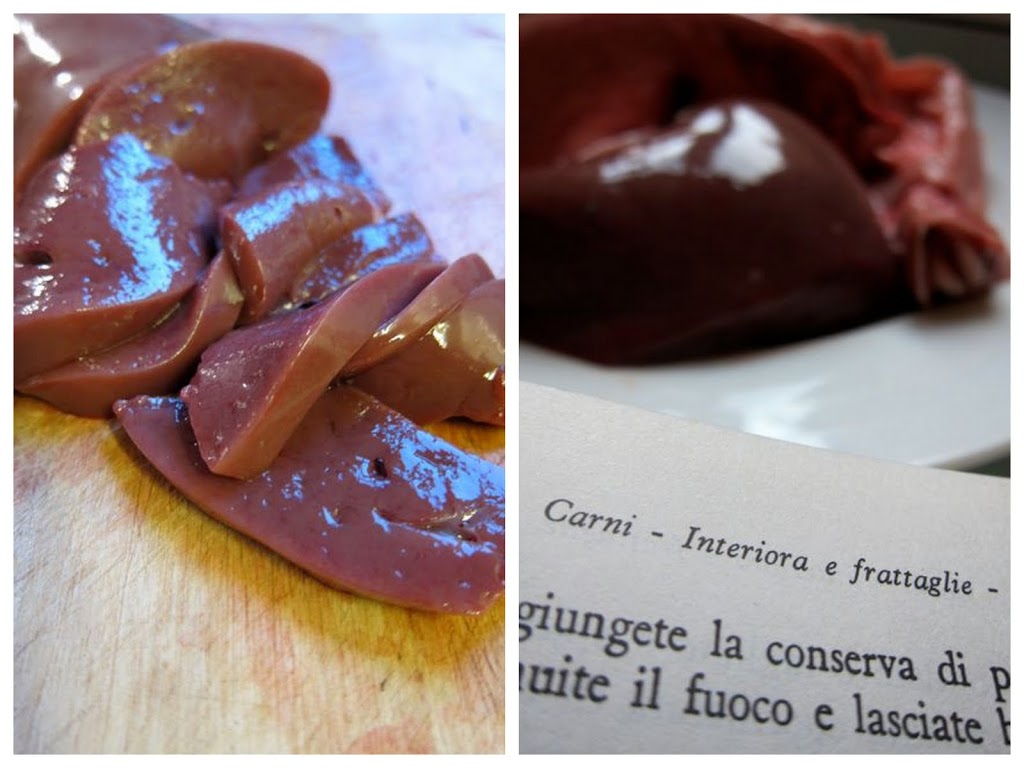
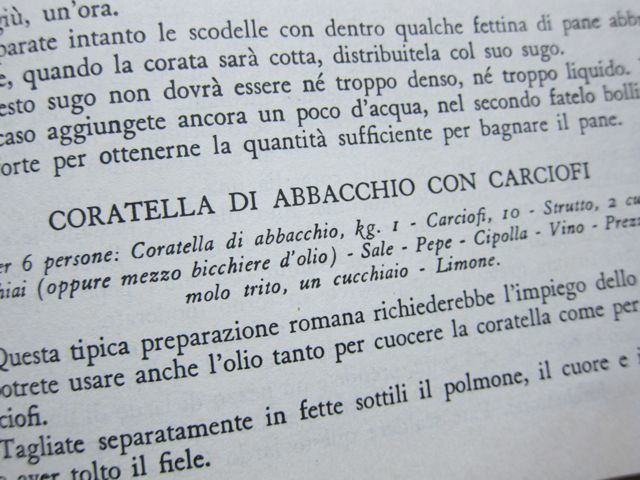
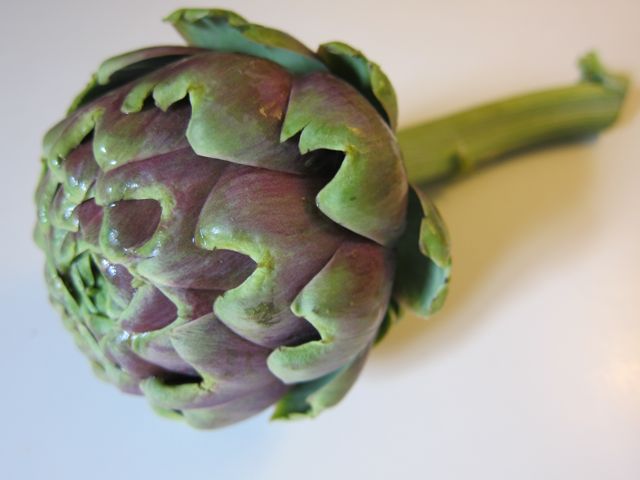
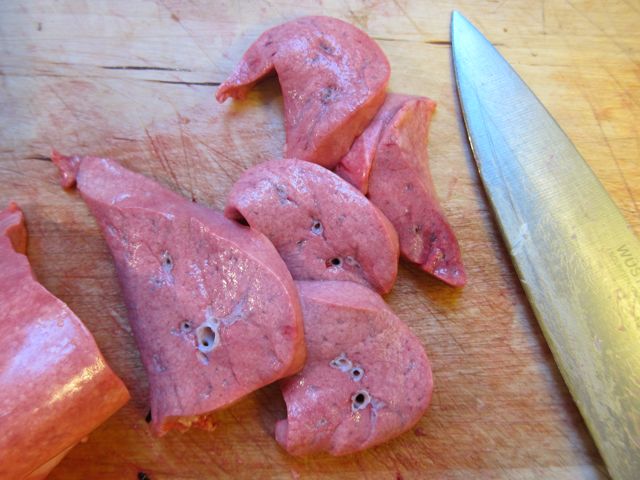
Coratella di Abbacchio Con Carciofi
(From : Ada Boni Il Talismano della Felicita)
Serves 6
1 kg Coratella
10 Artichokes
2 Tablespoons lard or 1/2 cup olive oil (I used oil, but would have used lard if I had it)
salt
pepper
1 onion
White wine
Mint (Ada says use parsley)
Lemon
Separate the organs from the connecting tissue. Cut each one into 1/4 inch slices, and keep separate.
Clean, trim and slice the artichokes into wedges (see my explanation on how to do this). Heat up a large pan with oil or lard, and cook the artichokes until tender, adding water if they dry out. Season with salt and pepper
Once the artichokes are done, choose a pan large enough to hold all the innards and artichokes. Add oil or lard and the chopped onion. Let it just soften a bit, then add the lungs to cook with the onion (this way the onion won’t over cook). Add a bit of water if the onions start to brown. Let the lung cook until browned and it gives off its characteristic whistle (about 15 to 20 minutes). Season with salt and pepper, and add about a 1/3 cup white wine. Let it evaporate and add the heart. After a few minutes, add the liver.
Let it cook for a few minutes, and once the liver has lost its rosy color, add the artichokes. Stir and add 1/3 cup more wine. Let it cook a bit more and add the chopped mint.
Place on platter and squeeze some lemon juice over the top. Coratella should be served piping hot. I like to serve it with mashed potatoes. 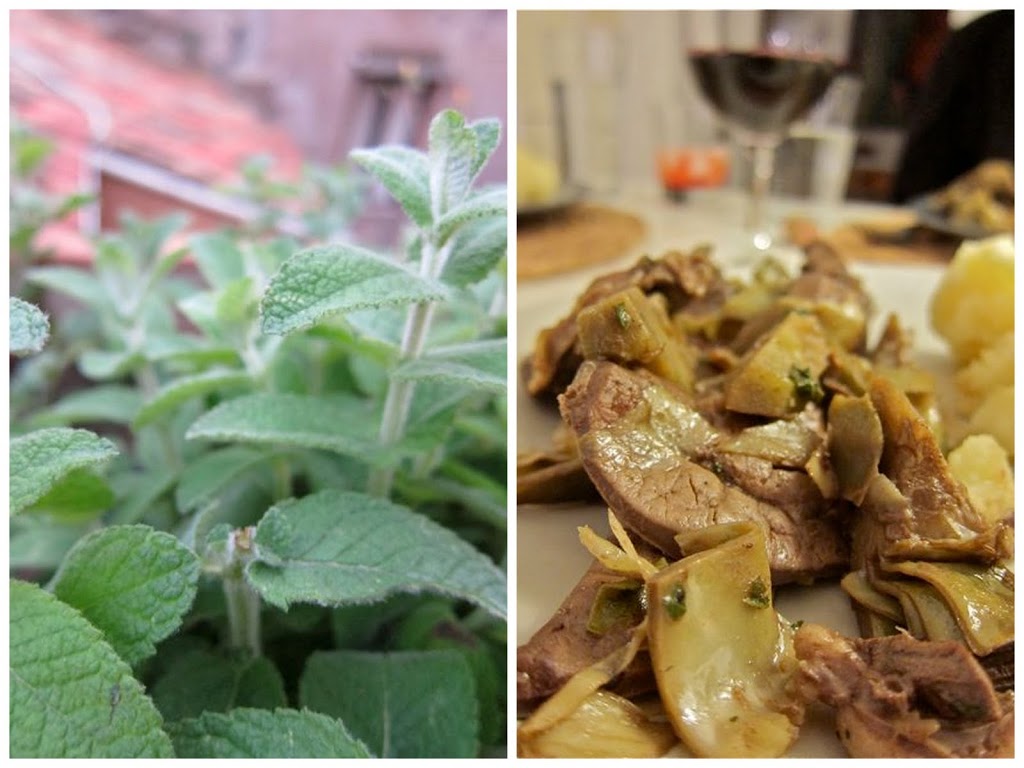
I had to resort to Il Talismano also when I cooked Coratella for the first time (my butcher has a minute amount of it every week – what does not get purchased is fed to the local colony of stray cats). And good thing too becaus eI would have put the lungs as one of the latest ingredients – because of the flimsy appearance they have – while in fact they go early in the pan on account of the bigger wind pipes! And you do hear them whistle too!
Where would we be without Ada Boni?
This is going to be a delicious meal,no doubt! Much work in preparation.
This post turned my stomach.
Many Americans would turn their nose up on this dish.. I pity their ignorance!
I wonder, will this recipe work for beef innards?
Umph, I have to say that I would have perferred an X rating on the visuals beforehand but can well appreciate what this dish must be to taste. Even in this corner of the Alpilles in Provence, where baby lambs are a plenty, we don’t have such a dish. Interesting.
loving even the guts of everything from Italia…I live in the States but have dual citizenship…keep opening up the cultural door to EVERYTHING and ANYTHING you care to share with the rest of the world.
Mannaggia, I wish I’d read this before Easter! I looked at the cortella from our lamb and took the heart, sliced, seasoned and floured lightly, then quickly pan fried it. It was a real hit with the antipasti, even with people who were a little skeptical of any form of frattaglie.
The liver is in the freezer because we had way too much food. I hope it will survive thawing.
The lungs however I ended up throwing out, because I was cooking at a friend’s place in le Marche, not at home in Rome where I might have leafed through my Talismano della felicità. If only I’d known! I even had a stash of Sezze artichokes, which are supposed to be among the best around.
Ah, well, there’s always next year’s lamb. Thanks so much for posting this.
Um, that should have been coratella.
There is hardly a restaurant in Marche that Doesn’t serve coratella?
I love offal and this dish is something I will be trying as it seems nice and light. We have a dish from Dutch family tradition that uses the pluck but is cooked all together with flour and a few spices, left to cool and then fried in butter. Living in Australia now, it is becoming much easier to obtain the pluck because of a gradual “opening the mind” to new and different things. Funny really because it has been around in Europe for so long and now it is becoming “fashionable” to the younger generation! Lovely blog! Bravo!! 🙂
Paragraph 7: “This recipe is a no brainer…” I know, I know, it’s June of 2016 and you will never see this comment, but I HAD to say something—:) sooo funny.
As long as I’m at it, it all looks delicious to me! btw, I had Mario B’s lamb brain ravs in Las Vegas some years ago—quite tasty too!
LOVE the archives—
Haha! That was unintentional. Good catch!
Greeks also use the offal of baby lamb during Easter.
Elizabeth, just because you’ve never heard of the word ‘pluck’, you shouldn’t assume that other people haven’t.
I stand by my belief that 98% of Americans (and I’m being generous here) have never heard of the word pluck when referring to lamb innards. If you did know the word, then you get extra points.